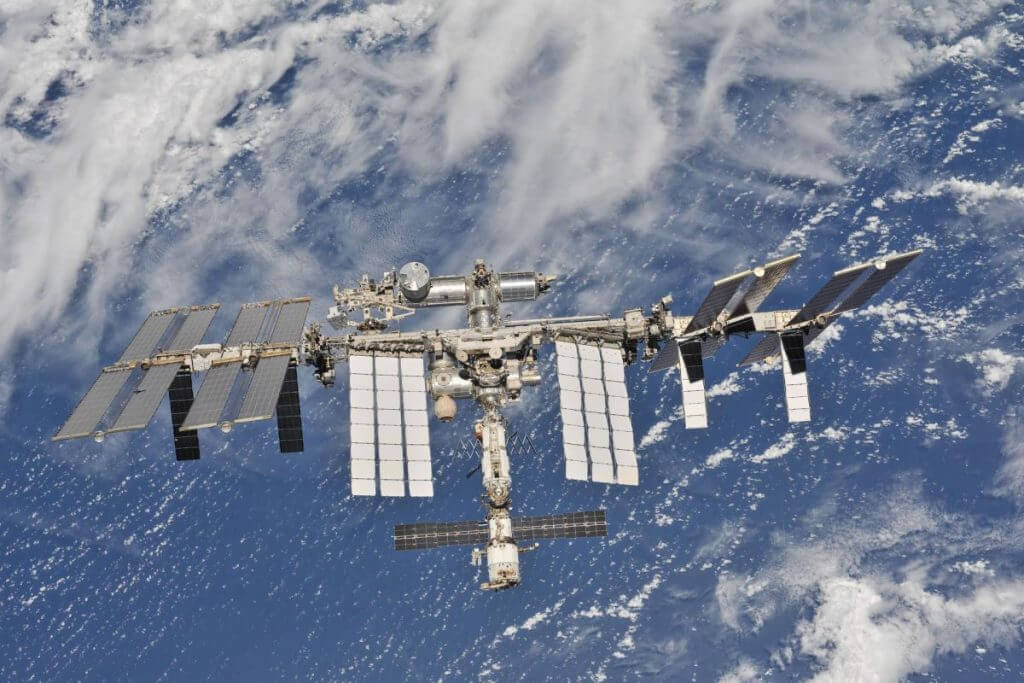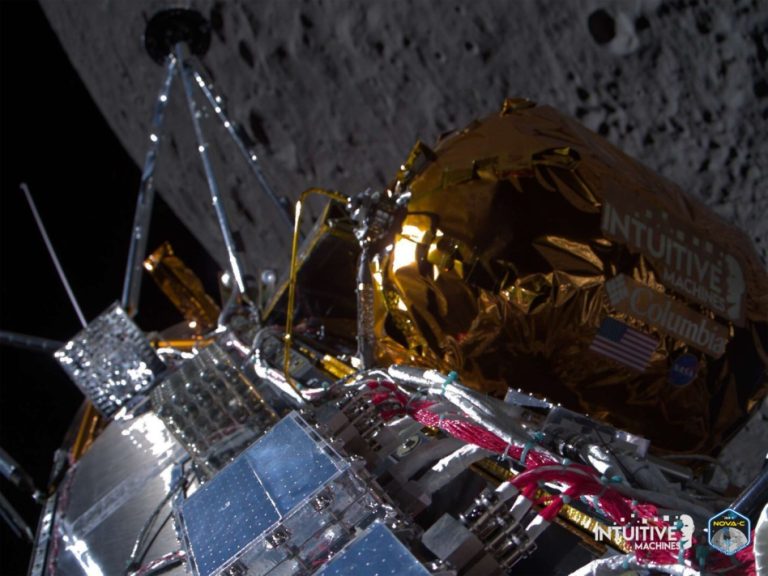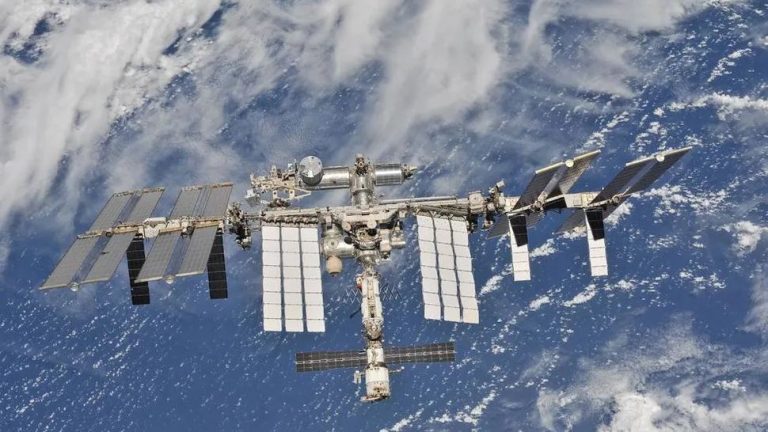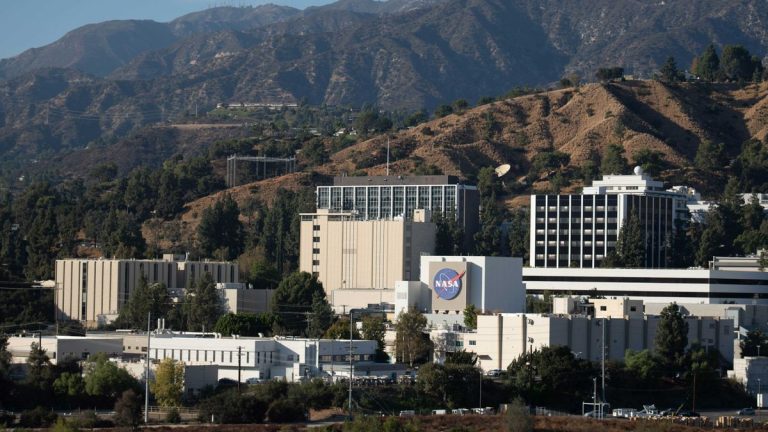
NASA looks to private outposts to build on International Space Station’s legacy (Image Credit: Space.com)
The International Space Station (ISS) is entering its golden years, but activities aboard the orbiting lab aren’t slowing down — just the opposite, in fact.
The ISS can’t fly forever, however, and NASA officials envision a diverse market of commercial space stations taking its place as demand for access to low Earth orbit (LEO) continues to increase.
NASA leaders and industry officials gathered last week at the 11th annual International Space Station Research and Development Conference (ISSRDC) in Washington, D.C., to discuss their visions for the next decade of space exploration. Discovery Channel’s David Kerley moderated kickoff sessions for the conference the morning of July 25, in which he spoke with current astronauts and representatives for organizations utilizing the ISS as a research platform, as well as top officials in charge of science and programs aboard the orbital lab.
Related: Building the International Space Station (photos)
With Kerley leading the discussion, the July 25 keynote dialogue between NASA astronauts Jessica Watkins and Kjell Lindgren honed in on current ISS goings-on, as the pair spoke with Voxa founder and CEO Chris Own and Oren Milstein, CEO and chief scientific officer at Stemrad.
Voxa’s Mochii electron microscope is the first of its kind in space and provides a unique tool for researchers in need of the platform. Stemrad’s AstroRad vest helps prevent radiation exposure by way of a wearable protective garment. Both devices highlight some of the main reasons the ISS was constructed in the first place — to facilitate groundbreaking research in LEO and to discover ways for humans to safely live and operate during long-term deep-space missions.
“We’re filled to the brim with science,” Lindgren told conference attendees. “There’s science happening in all nooks and crannies of the station. You really feel like we’re up and running and providing that vital testbed for extending our reach in the solar system and improving life back on Earth.”
The framework for this year’s ISSRDC was focused on NASA’s aspirational goals for scientific research in LEO over the next decade and the commercial entities poised to launch their own space stations to replace the aging ISS. Agency representatives also drew links between LEO research accomplishments and NASA’s upcoming Artemis missions to the moon and eventually Mars.
Kerley’s guests following the keynote included ISS program manager Joel Montalbano; Robyn Gatens, director of the ISS at NASA’s Space Operations Mission Directorate; and Ray Lugo, CEO of the ISS National Laboratory, the organization that manages the orbital platform for government, academic and commercial use. Their talk focused on the ISS as an active proving ground and model for research, as well as the imminent shift to private space stations and new commercial LEO destinations (CLDs).
A long history in orbit
The first modules for the ISS launched in 1998, and the station has been continuously occupied since November 2000. The orbital lab represents one of the largest international collaborations in human history, has been home to more than 250 people from 20 different countries to date, and has served as a platform of research in microgravity for over 4,000 research projects.
The ISS was originally designed with a 15-year lifespan, but NASA has extended that expectation several times and now wants the station to be in operation until at least 2030 — a position that Congress recently supported. And while the space agency is fully leaning into the vision of new CLDs replacing the current station, officials are also eager to continue using the ISS to its full potential.
“The first decade was really about assembly and completing the space station. We started to learn how to use [the ISS] and how to expand utilization of this incredible platform,” Gatens said during the July 25 morning session. She claims coinage to the agency’s “decade of results” moniker, and emphasized the need to “get all the juice … all the benefits out of [the ISS] while we are planning for transition to what comes next in low Earth orbit with commercial space stations.”
Gatens’ remarks echoed sentiments Lindgren also expressed during the keynote. “We’ve been at work for over two decades now, and I think that we have the privilege of seeing the space station operating at its intended capacity. We have hundreds of research experiments up here, and it is building on the work that has been done over previous decades,” Lindgren said.
“Some of the things that are going on in space would really make people feel good about the investment that the US taxpayers have made,” Ray Lugo said in the discussion. He believes we are at the dawn of a new age of orbital research.
“I think that we’re going to look back on what we’re doing today, and we’re going to say, ‘We were at the beginning of this new advancement in technology,'” Lugo said, noting that clinical therapies being developed because of on-station research will be “game changing.”
Montalbano became especially engaged while talking about ongoing experiments aboard the space station. He spoke about LambdaVision, a company using the space station to manufacture artificial retinas in microgravity. “The ability to take what we’ve done on the International Space Station and restore sight to someone [on Earth]… That’s the coolest thing in the world,” he said.
Montalbano’s enthusiasm for orbital science seems to parallel his confidence in the station to facilitate that research over the next decade and beyond. “We’ll be ready to go until 2030,” he said, “and if somebody asks us to go a little longer, I’m going to put a smile on your face and say we can go do that.”
In fact, though its construction was officially completed in 2011, the ISS is busier now than ever before. “We are going to rock and roll,” Montalbano said. He highlighted this spring’s Ax-1, the first all-private crewed mission to the ISS, stating that NASA plans to see a similar mission take place next year.
Montalbano also listed the upcoming crewed flight and eventual regular rotation of Boeing’s Starliner spacecraft, the addition of a cargo mission with Sierra Space’s Dream Chaser space plane, and another cargo vehicle being built by the Japanese space agency, JAXA. “So yeah, there’s no grass growing under anybody’s feet here on board the International Space Station,” Montalbano said.
Uncertainty surrounding Russia’s role
The July 25 conversations did, however, hang beneath a cloud of news that had broken barely hours before the morning sessions began. Reports circulated that the new head of Roscosmos, the Russian space agency, had communicated to President Vladimir Putin the country’s intent to withdraw from the ISS after 2024.
Subsequent statements from Roscosmos clarified the agency’s stance to continue the international partnership until the country begins operation of its own new space station, but that isn’t expected until at least 2028. That news came later, though, and the not-so-far-away thought of 2024 lingered in the morning’s discussions.
Gatens expressed emphatically she “absolutely” does not want NASA’s relationship with Russia to end, despite the nation’s invasion of Ukraine and the fallout from that ongoing war. “They have been good partners, as all of our partners are, and we want to continue together as partners operating the space station through the decade,” she said. “I think the Russians, just like us, are thinking ahead to what’s next for them. And as we’re planning for transition after 2030 to commercial owned and operated space stations in low Earth orbit, they have a similar plan.”
“While we’re busy going full bore on the International Space Station through the end of the decade, we also need to plan for that transition, too, and are enabling those following commercial space stations to be successful,” Gatens said. “The whole idea is, we don’t want a gap in low Earth orbit. So we need to plan for a smooth transition. It’s all about continuity.”
Gatens described the possible evolution of the current model for the ISS and the national lab program into one with a similar framework to NASA’s commercial cargo and crew contracts. “We’ll have service contracts with these commercial space stations for transportation, for accommodation,” she said, “and we’ll buy that as a service — hopefully, as we say, ‘one of many customers’ in this economy.”
Related: NASA wants to help private space stations get off the ground

A fleet of private space stations?
Northrop Grumman, Axiom Space, Nanoracks and Sierra Space are all private companies with plans to construct their own space stations. NASA wants at least one of them to be on orbit before the ISS retires, a timeline the companies are targeting as well.
“The commercial LEO destination partners we are working with today have plans to be operational as early as 2027,” Gatens said.
Quoting a colleague, Lugo echoed advice given to him by the former director of engineering at NASA’s Johnson Space Center during the space station’s design period in the ’90s, who said, “Let’s not make the space station a science experiment. Let’s build a space station to do science experiments.” Lugo later added, “You want to put the right experiment on the right platform.”
A panel on the afternoon of July 25 continued the morning’s discussions with ISS chief scientist Kirt Costello and ISS National Lab chief scientist Mike Roberts. Both spoke about further innovations to be realized aboard the ISS, and the need to design capabilities to be transferable to new CLDs down the road.
Roberts expects a diverse availability of private space stations, unique in their designs and specialized in their abilities, saying, “Each of these commercial LEO destination companies, the four [Northrop Grumman, Axiom Space, Nanoracks and Sierra Space] are going to be looking at ways to address different needs from different consumers out there … Each of those companies is likely to take slightly different approaches to designing and operating their stations. And that’s going to have, I think, an extremely beneficial value.”
Roberts sees a day when NASA is less invested in space stations and more invested in science aboard space stations. “While there needs to be continued strong support from governments, we at National Lab and NASA and other agencies are also working towards that day when they are purely commercial-driven, so that the consumer will drive what’s accessible in space and what’s needed there,” he said. “And that … will drive acceleration in the pace of discovery in that environment.”
With over 20 years of expertise building and operating a space station, NASA is offering whatever insight it can to companies to utilize their on-orbit experience. “NASA is not dictating how that hardware is going to be built,” said Costello, “but we do hope that you benefit from those lessons learned.” He also points out the additional eight years of life the ISS still has ahead (provided the other partners officially endorse the 2030 timeline) and hopes the station’s facilities continue to improve.
“We’re looking at capabilities that we can enable on ISS, but with a mindset towards portability,” Costello said, “to move those onto CLDs in the future, so that we can continue the NASA research and the National Lab research that takes advantage of those research facilities on the ISS in a future program.”
As the world waits for humanity’s first commercial space stations to reach orbit over the next several years, NASA and its international partners are marching strong into a decade that may end up being the ISS’s most consequential.
“We’re not just hanging on till commercial space stations are there. We’ve got definite goals we want to accomplish,” Gatens said near the end of her July 25 panel, excited for the future of LEO opportunities. “As soon as they’re ready, we’re going to start to purchase services so that we can plan for that transition.”
Follow us on Twitter @Spacedotcom or on Facebook.








